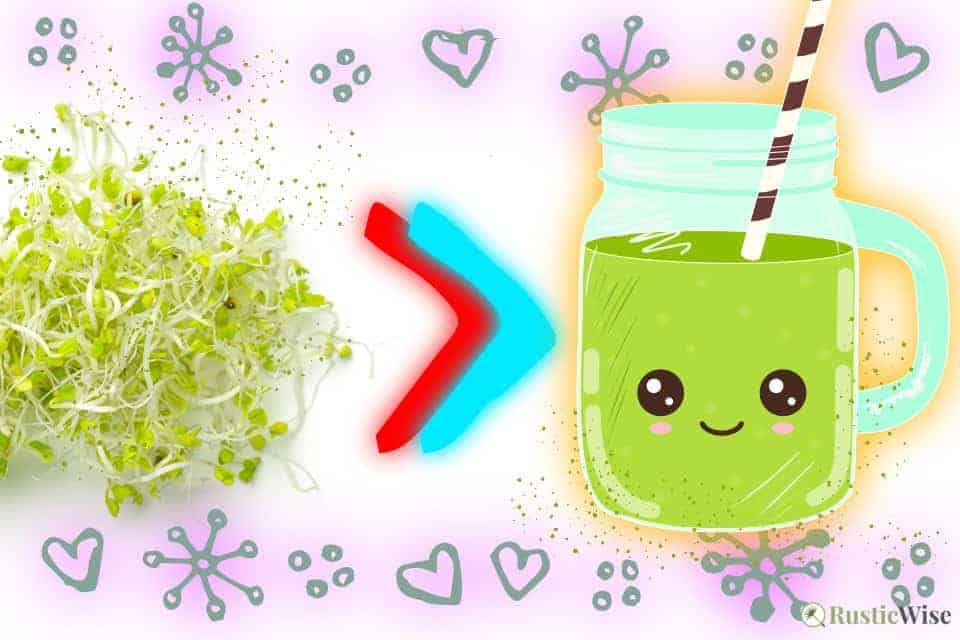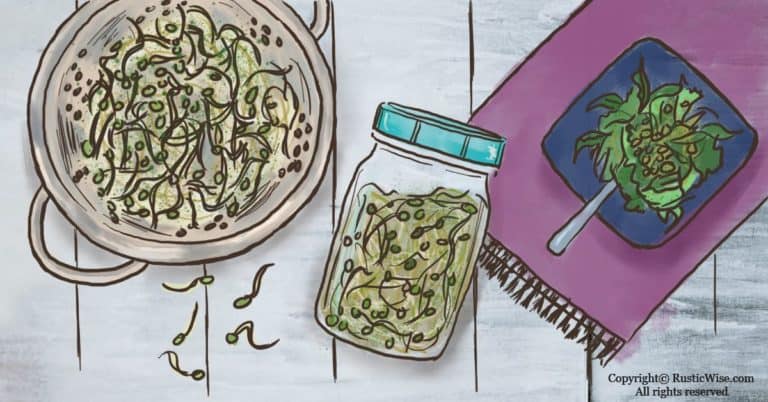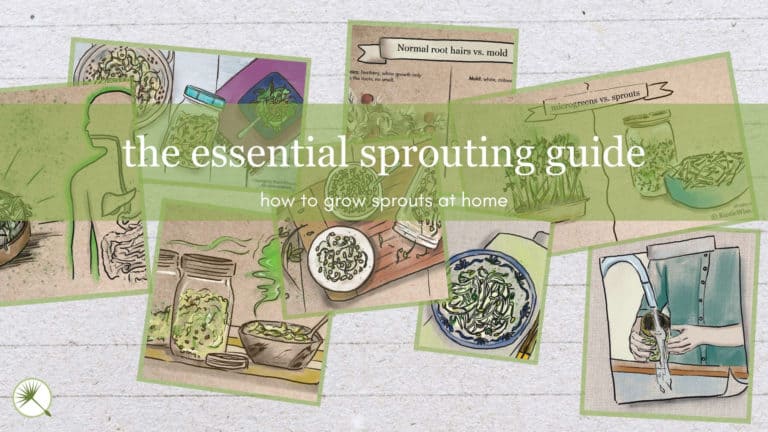How to Juice Broccoli Sprouts: Power Up With These 4 Recipes
Move aside mature broccoli. While the fully grown cruciferous vegetable has plenty of vitamins A, C, K, and B6, along with being a rich source of dietary fiber, the tiny sprouted plants are even more nutrient-dense.
Broccoli sprouts are a rich source of sulforaphane, a chemical compound formed in raw broccoli when it’s juiced, blended or chopped. Sulforaphane has many health benefits, including protecting the body from chemical carcinogens.
One easy way to get your daily dose of vitamins (and more) is to juice or blend fruits and vegetables. I’ll show you how to juice broccoli sprouts to maximize the health benefits and flavor. Not a fan of the taste of this cruciferous veggie? No worries. We’ll show you how to minimize the sharp flavor of this superfood and how to turn it into a healthy yet tasty juice or smoothie.
What are broccoli sprouts, exactly?
Sprouts are the germinated seeds of a plant. These tiny greens are eaten in their entirety: seed, root, and shoot. Broccoli sprouts are the immature plants grown from broccoli seed.
The great thing about sprouting is you can grow them in a mason jar. They don’t need any soil or much light, and take up little space. Plus, the time from soaking seeds to harvesting sprouts can be as short as a few days.
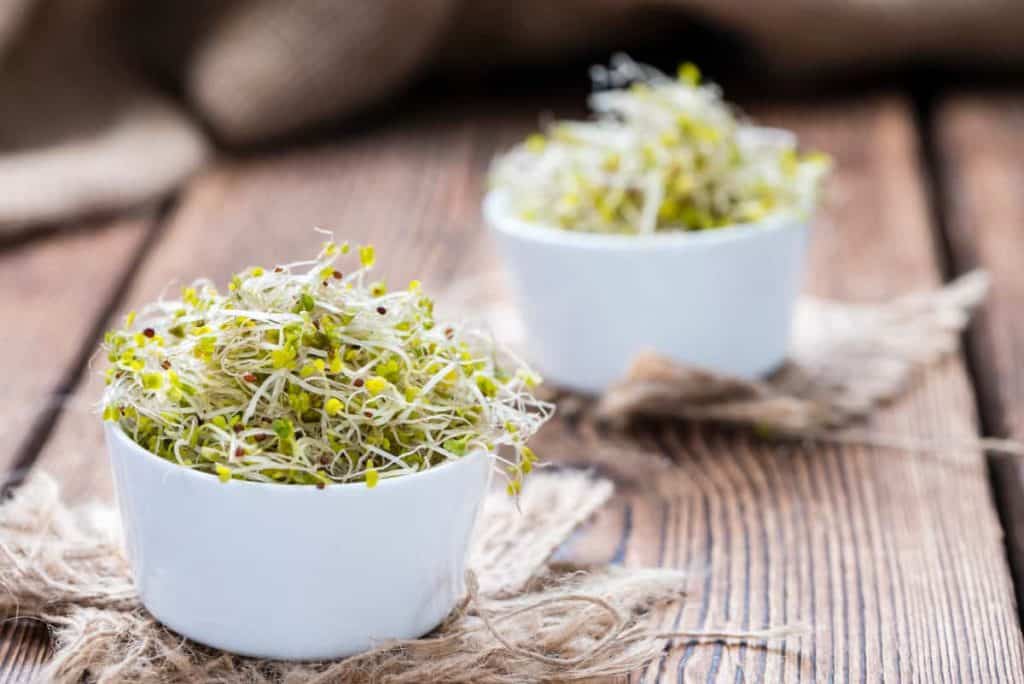
Credit: Deposit Photos
Note: Sprouts are NOT the same as microgreens. You grow micros in soil (or some other type of growing media). When harvesting, you cut micros above the soil line and only eat the young leaves and shoots. You can also grow this Brassica as microgreens, the young shoots of plants.
Benefits of broccoli sprouts
There are many health benefits of eating broccoli sprouts. Here are a few reasons to add this young veggie to your diet:
- Packed with vitamins and antioxidants: This member of the Brassica family is a rich source of vitamins A, C, K, and B6. It’s also packed with calcium, dietary fiber, iron, manganese, and protein.¹
- An excellent source of glucoraphanin: Many members of the Brassica family such as broccoli and cauliflower, contain oodles of glucoraphanin. The compound glucoraphanin is needed to produce sulforaphane, which has cancer preventing properties, amongst other benefits. (More on this below!)
What about eating mature broccoli?
Fully grown vegetables or mature plants are still great to include in your diet. However, if you’re not exactly a fan of eating your veggies, many are looking to sprouts for a more nutrient-dense version of its mature counterpart.
In other words, your body can get more nutrients and other beneficial enzymes by consuming a smaller amount of sprouts than eating vast amounts of regular broccoli florets.
One study found that the optimal time to harvest broccoli sprouts was at 3 days. These three-day-old shoots contained peak levels of glucoraphanin, a compound required to produce sulforaphane.²
Researchers found three-day broccoli sprouts contained between 10 and 100 times higher amounts of glucoraphanin than the fully grown plants.²
A quick look at sulforaphane
By now I’ve dropped this term several times without going into too much detail. Here’s a quick overview of sulforaphane and its benefits.
Sulforaphane is a type of phytochemical belonging to the isothiocyanate class. And broccoli (along with cauliflower and kale) are rich sources of glucoraphanin.³
The compound sulforaphane isn’t present in a stalk of raw broccoli—it’s only produced when a vegetable containing glucoraphanin is juiced, blended or chopped.
Sulforaphane is a phytochemical that is known for slowing or preventing cancer. It shows promise in preventing many forms of cancer, including breast and prostate cancers.³
It also contains antioxidant properties which boost the immune system and help ward off illnesses.³
In addition, sulforaphane has anti-inflammatory and neuroprotective properties that protect the cardiovascular system. It has shown anti-aging benefits and preventative effects on diabetes.³
What about broccoli microgreens?
Microgreens are nutrient-dense shoots that are wonderful additions to any diet and are suitable for adding to juices or smoothies. While these Brassica micros take longer to grow and harvest than sprouts, you can juice or blend them for a healthy, nutrient-rich addition to your juice.
Not a fan of broccoli? Here are some broccoli flavor pairings
If you enjoy the flavor of mature broccoli, you might be surprised that the sprouts have a fresh, slightly spicy flavor. Some describe it as radish-like.
While the taste is not for everyone, broccoli sprouts are the ultimate health food for its cancer-fighting phytonutrients, vitamins, fiber, protein, iron and calcium content.
If you’re not a fan of this veggie, or simply want to tone down the spicier notes, here are a few broccoli flavor pairings to try:
- Ginger: The spicy and sweet nature of ginger root counterbalances the sharpness of the sprouts.
- Orange juice: The sweet and tart flavor of OJ can mask the earthy flavor of the Brassica.
- Lemon juice: This tart and zesty citrus cuts right through the spice!
- Apples: This flavor of apples is compatible with almost every fruit and veggie, and its sweetness makes every juice or smoothie more palatable.
- Avocado: The creamy and mild taste of avocado can take the edge off of broccoli.
Juicing or blending?
The best way to get the most sulforaphane from broccoli sprouts is to eat them raw. Heating or cooking sprouts can destroy many of the nutrients and health benefits.
And one of the easiest ways to consume them raw is to juice them. The juicing process removes the fiber content, resulting in a smaller portion of nutrient-dense liquid. This may be ideal for those on low-fiber diets. You’ll need a juicer to get the job done.
With juicing, you’ll need more fruits and vegetables as the fiber is removed.
On the other hand, the blending process leaves all the fiber intact leaving you with a thicker, more filling smoothie. You can use a regular kitchen blender, or a high-powered Vitamix.
Both blending and juicing provide great nutritional benefits.
Tips on juicing sprouts
Since you need to use a lot more sprouts when juicing, it’s best to mix with other ingredients.
- Rinse sprouts in cool water in a fine-mesh strainer.
- Mix with other leafy greens such as baby spinach or kale.
- Try combining with other sprouts or microgreens such as alfalfa, chickpea, lentil, and sunflower.
- Alternate between adding other vegetables/fruits and sprouts to your juice.
- A little goes a long way—about 1/2 cup or a heaping handful of sprouts is enough for one serving.
- Use fresh sprouts, or powdered sprouts which have a longer shelf life.
A roundup of 4 tasty broccoli sprout juice and smoothie recipes
Here’s a roundup of broccoli juice and smoothie recipes that not only pack a nutritional punch but also are easy on the taste buds.

This vegan-friendly recipe combines the goodness of broccoli combined with a pinch of cocoa powder to counterbalance the sharpness of the Brassica. Frozen berries and spinach round out the healthy smoothie (via Clean Eating Kitchen).
Green Smoothie with Broccoli Sprouts and Avocado
Start your day right with a splash of orange juice combined with kiwis, avocados, and broccoli sprouts or micros (via Health With Food).
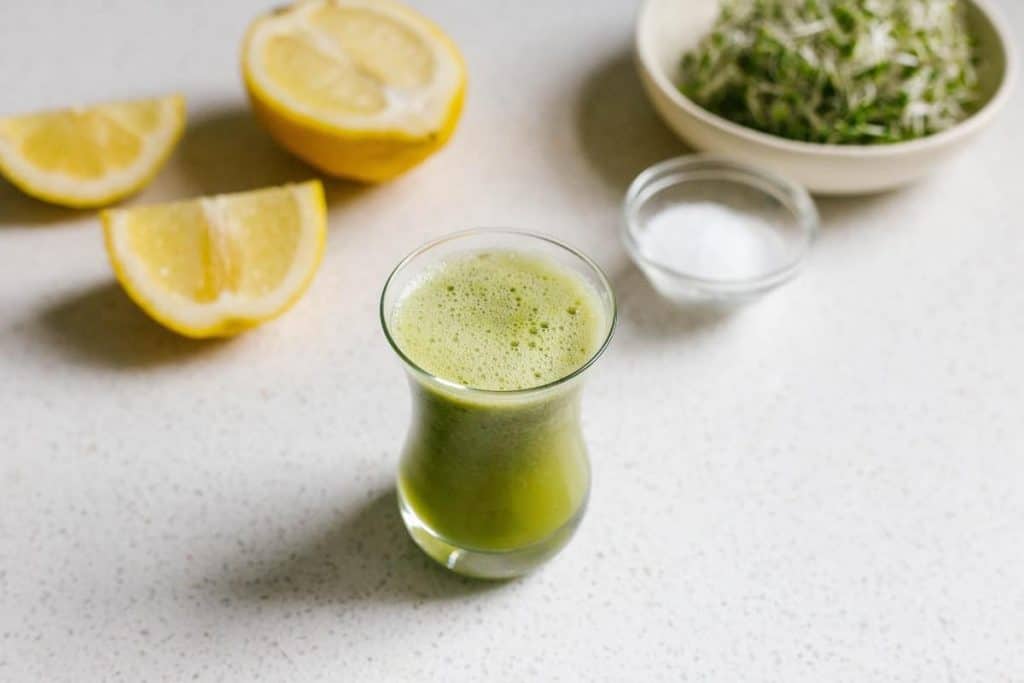
Here’s a healthy shot of nutrients that requires only sprouts, lemon juice, a pinch of salt, and water (via Hormones Balance).

Berry Broccoli Sprout Smoothie
Frozen blueberries, raspberries, avocado, and coconut milk pair perfectly with a bit of Brassica sprouts (via Healing Family Eats).
Where can you find broccoli sprouts?
You’ll find these tasty greens in supermarkets and specialty stores. If you don’t have fresh sprouts on hand, you can also buy powdered sprouts which have a longer shelf life.
Or, you can grow your own sprouts easily at home using a glass mason jar!
👉 If you like this post, see our Essential Sprouting Guide: How To Grow Sprouts at Home. 🌱
Would you like more timeless tips via email?
Fun tips to help you live an independent, self-sustaining lifestyle. Opt-out at any time.


References
- Nutrition Data, Broccoli, raw, https://nutritiondata.self.com/facts/vegetables-and-vegetable-products/2356/2. Accessed October 2022.
- Fahey, J. W., Zhang, Y., & Talalay, P. (1997). Broccoli sprouts: an exceptionally rich source of inducers of enzymes that protect against chemical carcinogens. Proceedings of the National Academy of Sciences of the United States of America, 94(19), 10367–10372. https://doi.org/10.1073/pnas.94.19.10367
- Kim, J. K., & Park, S. U. (2016). Current potential health benefits of sulforaphane. EXCLI journal, 15, 571–577. https://doi.org/10.17179/excli2016-485

Author: Josh Tesolin
Josh is co-founder of RusticWise. When he’s not tinkering in the garden, or fixing something around the house, you can find him working on a vast array of random side projects.

